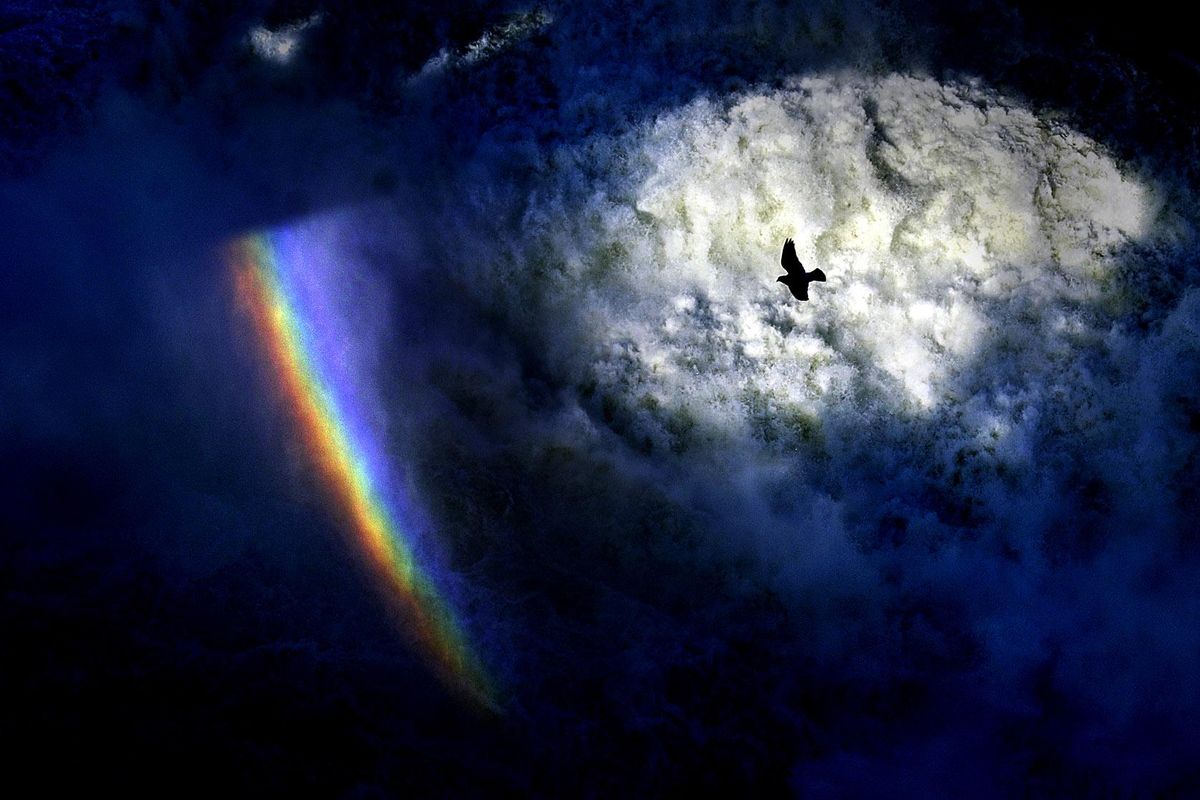This time of year, the ‘soul’ of the Spokane river returns – its ‘fast water’ offering a look into the past

When Barry Moses stares at the roiling spring waters of the Spokane River, especially near the dams, he sees what he calls “a shadow of the history of how things used to be.”
In Spokane Salish, the language traditionally spoken by the Spokane Tribe, the river was known as the “place of fast water.” Over the years, dams up and down the river have slowed that fast-moving water. But during the spring run-off, the pace quickens.
In Moses’ worldview, the language used to describe a place inextricable from its soul and meaning. For him the “soul of the river is this fast-moving water.”
Moses, a member of the Spokane Tribe, develops curriculum for the Kalispel Tribal schools and is one of the youngest and most fluent Spokane Salish speakers. He also teaches Spokane Salish at the Salish School of Spokane once a week.
Like the Romantic languages, Salish is a family of languages. Individual Salish languages, like Spokane, Kalispel or Colville-Okanagan Salish, are similar but still distinct.
“It’s almost like a pilgrimage for me in the spring,” Moses said. “I have to go down there just for the feeling of being next to that water when it’s at its full force.”
On Friday, tourists and some Spokane natives also went to the river to feel the force of an early spring runoff. As geese flew across the raging water, Jackson McQuown stood on a pedestrian suspension bridge spanning the river. The Alaskan resident took selfies while spray thrown from the river below coated his face.
“It’s colossal. It’s massive. Mother nature at work. Pretty invigorating to be down here. It makes you feel alive,” McQuown said loudly to be heard over the river’s roar. “Just feeling the waves and the power and the mist hitting you in the face.”
That was the same sentiment that James Glover, a father of Spokane, expressed when he first saw the falls in 1873.
In his diary from the time, according to Eastern Washington University historian William Youngs, Glover wrote, “I gave myself completely over to admiration and wonder at the beautiful, clear stream that was pouring into the kettle and over the falls.”
Later, Glover wrote, “I sat there unconscious of anything but the river, gazing and wondering and admiring.”
Moses believes that these sentiments, expressed by tourists, Spokane residents and James Glover, all point to what he calls the soul of the river. On Friday, as the suspension bridge hummed and gently swayed, Lacy Crowder, a Spokane resident, took in the sights, and sounds.
“The sound of it is really soothing,” she said.
From Moses’ perspective, the soul of the Spokane River has been diluted by dams. In the summer and winter, the river’s pace slows, only reaching its full force in the spring. Long Lake is an example of this, he said.
“It’s not a lake, it’s the Spokane River. It’s the fast-moving water,” Moses said, adding later, “That soul hasn’t died, it’s just beneath the surface of the backwaters.”
Shortly after James Glover noted his wonder and admiration, he recorded a much different sentiment.
“I determined that I would possess it,” he wrote in 1873.
Seventeen years later, the very first Spokane hydroelectric project was complete. Now the dams provide critical power to Spokane and the Spokane region and made much of this area’s development possible.
The Monroe Street hydroelectric dam generates 15 megawatts while the Upper Falls produces 10.2 megawatts. That’s enough electricity for at least 15,000 homes.
Moses doesn’t pretend to have a solution to this conundrum. Personally, he’s never known the river without the dams. Still, he wonders.
“I kind of look at the dams on the river as kind of a clash of cultures,” he said, adding later, “I would love to see the dams removed. I would love to see the soul of the river again be not hidden.”